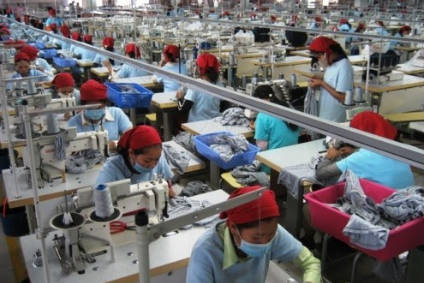
The ILO report calls Asia the “garment factory of the world,” but also warns the sector faces an array of challenges many of which have been accelerated by the Covid-19 pandemic. Challenges include rising labour costs, production and process automation, ‘reshoring’ and ‘nearshoring’, as well as increased pressure to transition towards a more sustainable business model, with improved wages and working conditions.
‘Employment, wages and productivity in the Asian garment sector: Taking stock of recent trends’ reviews employment, wages and labour productivity in the Asian garment sector over the 2010-19 period and highlights how the industry still accounts for 55% of global textiles and clothing exports and employs some 60 million workers.
David Williams, manager of the ILO’s Decent Work in Garment Supply Chains Asia programme, says that while in many countries the sector has seen growth in both wages and productivity, the relationship between government policies and external forces is not always clear and simple.
“Backed up by genuine support for social dialogue and collective bargaining and concrete incentives from brands, the industry can create a virtuous cycle in which higher wages drive higher productivity, and vice-versa,” Williams says.
The report highlights the sector’s evolution following different trajectories across the region. While economic diversification and upgrading have reduced its importance in countries like China, Thailand and the Philippines, it remains the key economic driver in nations like Cambodia and Bangladesh.
Asia’s share in global textiles and clothing exports has grown significantly since the early 2000s, peaking at 58% in 2015, before declining to about 55% in 2019 the report notes.

US Tariffs are shifting - will you react or anticipate?
Don’t let policy changes catch you off guard. Stay proactive with real-time data and expert analysis.
By GlobalData“These trends were largely driven by China,” states the report, “which saw continuous export growth in both sub-sectors until 2015, after which its declining share in wearing apparel exports was only partly offset by an increase in the share of other Asian clothing exporters, specifically, Vietnam, Bangladesh, Myanmar and Cambodia.”
This could suggest that nearshoring, rather than relocation to lower cost destinations, has taken place during these years. Despite the recent decline, China’s dominance remains unmatched with 34% of global GTF exports in 2019, followed by Vietnam (5%), Bangladesh and India (4.3% each).
In recent years, the sector has relied heavily on low labour costs to secure global market advantages, the report says. Real wages in the sector have increased in most countries although working conditions remain challenging in general, including long and intense working hours, poor occupational safety and health as well as violations of fundamental rights at work.
Gender pay gaps persist across the Asian garment sector. Female employees are overrepresented among the sector’s low pay workers, and countries with the lowest shares of female workers also have among the highest gender pay gaps in the garment sector. “Although women represent a large share of garment workers, gender pay gaps persist, and are particularly elevated in countries where there are broader systematic labour market challenges for women. In some contexts, women workers are victim to physical and sexual violence, due to the gendered nature of their workplaces,” the report says.
While labour productivity in Asia’s garment sector has risen in recent decades, it remains low relative to other manufacturing sectors. Few garment producing countries have successfully moved up the value-chain in apparel production, with most manufacturers remaining engaged in low-skilled ‘cut-make-trim’ operations.
Data in the report does reveal a positive association between growth in labour productivity and wages in the sector, suggesting that investments in labour productivity may play an important role in helping elevate worker pay.
The full report, produced under the International Labour Organization Decent Work in Garment Supply Chains project, and supported by the Government of Sweden, can be downloaded from here.



